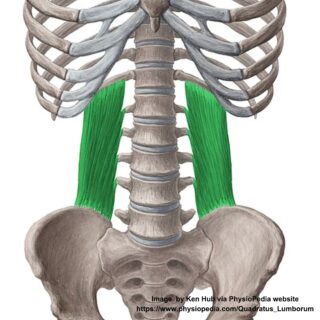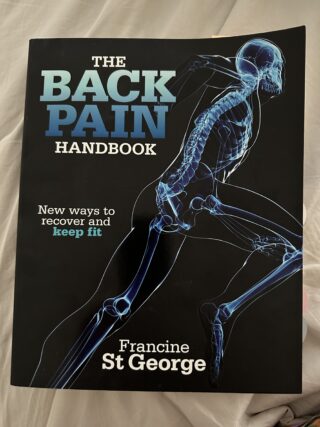Why I love Pilates
A surprising adventure of the physical kind

One thing leads to another.
Earlier in 2023 I wrote some articles for The Guardian about ageing. This led to me signing up to train as a reformer Pilates instructor. In August I received my instructor’s certificate. Now I’m working towards my matwork exam in December.
I never thought this was a path I’d take.
My career has been one of words and stories, people and places. But getting granular about Pilates – and putting my body to the test – has been a surprising adventure. It’s a completely different kind of discipline and creativity to writing. Are there many journalist/pilates enthusiasts? People who want to write and dissect and discuss the exercises and the short history of the movement? I am not sure, so I thought I’d bumble into this area and see if any of this resonates with readers.
Listening (and talking) to my body
As a kid, I loved sport. I was competitive. I won a few medals, but after the age of 6 or 7, the medals stopped coming. I learned ballet. At high school, I played team sport (netball, rounders, long-distance running and later, squash). As an adult I played netball and squash. I was an early adopter of aerobics!
When I became an international correspondent in 1995, I started working out in gyms with weights and machines. In Israel I had a brilliant personal trainer who’d been an instructor in the military. Elsewhere, in war- zones when it wasn’t safe to go running, on the streets, I ran up and down the staircase of our ten storey hotel in Baghdad as part of my fitness routine.
I’ve always enjoyed staying fit, but I’ll be honest. I didn’t really do due diligence or listen to my body. I was prone to giving up if I found an exercise too challenging. I was naturally inflexible so yoga was always going to be a challenge, though some very good teachers kept me at it for longer than I thought I’d last.
Pilates is the game-changer. It is transformed so much about what I know.
 I often find myself thinking things like, ‘how is my Quadratus Lumborum (right side) doing right now?’
I often find myself thinking things like, ‘how is my Quadratus Lumborum (right side) doing right now?’
The QL is a pair of muscles in your lower back which causes problems for me every now and then.
My back would spasm or ‘go out’ every now and then. For 3-5 days, it would hurt to twist or rotate to the right and bending movements became a bit restricted.
I think the cause of the outage was that I tended to recruit my lower back too much when I should have been harnessing the core (see further down).
I know if my lower back starts to feel tired or tight I need to lie on a very hard little ball to try to target and relax the QL muscle. When my back goes, I do this as often as I can. Eventually after a few days, it starts to release and I can get a bit more movement. This is usually a good time to visit the physio.
It’s been six months since my last problematic QL spasm, but I think about it a lot because I don’t want to go back to have a lower back problem even once or twice a year.
I talk to my neck a bit too. Funny how a simple postural correction of pushing my chin towards my chest (or making a ‘double chin’) and standing up taller, stretches the back of the neck and zaps the tension in my shoulders.
Learning about how to fix my body inspires me to keep listening to my body and find solutions to what helps me move, relax and recover and restore. Hopefully I am sharing this with others in my student teaching and readers.
Modify Me
In both mat and reformer pilates, we learn to scale up or scale down the difficulty of an exercise. This is known as progression or regression, or you can simply use the term ‘modification’.
Exercises become more difficult by adding weights or springs (or props like resistance bands or fitness rings). You can increase the number of repetitions, increase or decrease the speed of the movement. You can ‘tweak’ your awareness of the movement through an idea or a picture. For example, for a better squat on a reformer, I think a wonderful cue is to plant your butt or to ‘sit’ on the machine behind you.
The more I learn about pilates the more I love the creativity of modification. Every day at the gym I see people who have injuries, pain or bodies that require frequent modification. Every body is unique. There isn’t one single way of performing an exercise.
The core
The focus on the centre of the body is one of the key principles of Pilates (named after Joe Pilates, but more on that later).
The core consists of so much more than a six-pack.
For Pilates purposes, the core consists of the internal and external obliques, transverse abdominis, the diaphragm, muscles of the pelvic floor, and the multifidus along the lower spine, as well as the and pelvic-floor group which, when combined with the diaphragm (used in breathing) as well as a kind of internal pressure (experts call it Intra Abdominal Pressure or IAP), all comes together to create this strong centre or corset.
 Physiotherapist Francine St George in her book The Back Pain Handbook neatly explains how to activate your core if you are ever unsure how this works. If you stand tall and ‘flutter’ your hands (as if shaking water off them) you find your core muscles activate to enable the hands to move without your whole body wobbling.
Physiotherapist Francine St George in her book The Back Pain Handbook neatly explains how to activate your core if you are ever unsure how this works. If you stand tall and ‘flutter’ your hands (as if shaking water off them) you find your core muscles activate to enable the hands to move without your whole body wobbling.
So when we start to move the major junctions of the body, the shoulder girdle, the hips and legs, the spine, the core becomes a corset of power. As it strengthens it helps our posture, balance, stability and our functional or every day movements.
And that’s something which makes me sit up and listen.